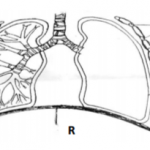KNEC KCSE Biology Paper 1 – 2014 Homa-Bay Mock
2014 Homa-Bay Mock
Biology Paper 1
Give three examples of continuous variations in human beings.
3 marks
(i) Name the main product of the dark stage of photosynthesis (1mk)
(ii) State the importance of chlorophyll in photosynthesis (1mk)
2 marks
(a) Define the term balanced diet (1mk)
(b) State the importance of roughage in a diet (1mk)
2 marks
(a) How is the fovea centralis adapted for its function in human eye (1mk)
(b) A person was not able to see far objects clearly but could view near objects clearly. Name the
eye-defect the person had (1mk)
(c) How can the defect be corrected (1mk)
3 marks
(a) What is fertilization ? (2mks)
(b) Explain how double fertilization takes place in plants (2mks)
4 marks
In an experiment, the pituitary gland of a rat was removed
(a) State the effect this will have on the quantity of urine produced by the rat. (1mk)
(b) Give a reason for your answer in (a) above (1mk)
2 marks
State two importance of sexual reproduction.
2 marks
The diagram below show part of a food relationship in an ecosystem
(a) Name the food relationship shown in the diagram (1mk)
(b) Name the trophic level occupied by organism A (1mk)
(c) What is the main source of energy in the ecosystem shown in the diagram above? (1mk)
3 marks
State the function of the diaghragm in the light microscope.
1 marks
Explain the role of antidiuretic hormone when there is less water in the human body.
3 marks
State the function of each of the following organelles
(a) Centrioles (1mk)
(b) Golgi body (1mk)
2 marks
The graph below shows action of heat on enzyme reaction:
(a) What is the effect of temperature on the rate of enzyme reaction? (2mks)
(b) State the relationship between temperature and enzyme activity (2mks)
4 marks
Distinguish between divergent and convergent evolution.
2 marks
State three distinguishing features for members of pylum chordate.
3 marks
(a) State the reasons for the following adaptations of the xylem vessels (2mks)
(i) Narrow lumen:
(ii) Lack of cross walls
(b) State two distinguishing features of the phloem sieve tubes (2mks)
4 marks
State the economic importance of the following plant excretory products
(a) Caffeine (2mks)
(b) Quinine (1mk)
3 marks
Explain why a baby loses more heat per unit weight than an adult when exposed to the same
environmental conditions.
2 marks
During oxidation of certain food substances, the respiratory quotient was found to be 0.718
(i) Name the type of food substance being oxidized (1mk)
(ii) State two advantages of using the food substances named (2mks)
3 marks
The diagram below shows various types of gene mutations
Mutation 1:
Mutation 2:
(c) Identify the type of gene mutation shown above (2mks)
Mutation 1
…………………………………………………………………………………………………….
Mutation 2
…………………………………………………………………………………………………….
(d) Distinguish between gene and chromosomal mutations (2mks)
4 marks
The diagram below shows dentition of a dog
A B C D E F G A B C F
(a) (i) Name the part labeled X (1mk)
(ii) Give a reason for your answer in a (i) above (1mk)
(b) State how part labeled Y is adapted to its function (1mk)
3 marks
The diagrams below represents a nerve cell
(a) Identify the nerve cell (1mk)
(b)(i) Give a reason for your answer in (a) above (1mk)
(iii) Show by use of an arrow the direction of flow of the nerve impulses(1mk)
3 marks
(a) State the importance of the following features in gaseous exchange
(i) Cartilage in the trachea (1mk)
(ii) Moisture on the surface of alveoli. (1mk)
(b) Name two sites where gaseous exchange takes place in terrestrial plants (2mks)
4 marks
During germination and early growth, the dry weight of endosperm decreases while that of the
embryo increases. Explain.
2 marks
The table below shows the percentage composition of blood plasma and urine for four substances.
| Component substance | Blood plasma % | Urine % |
| Urea Water Plasma proteins Glucose |
0.03 90 8.0 0.1 |
2.0 90 0 0 |
(a) Account for the absence of plasma proteins in urine (1mk)
(b) Urea concentration being greater in the urine than in the blood plasma (1mk)
2 marks
State THREE advantages of asexual reproduction in organisms.
3 marks
Explain how the human eye accommodates an image from a far distant object.
2 marks
The diagram below represents a stage of growth in two different seeds
(a)Identify the type of germination exhibited by seedlings A and B (2mks)
(b) State the role of oxygen in germination (1mk)
3 marks
In view of modern genetics explain why Lamarckian theory is unacceptable.
2 marks
Define the following terms used in ecology
(i) Biosphere
(ii) Population
(iii) Synecology
(iv) Carrying capacity
4 marks







